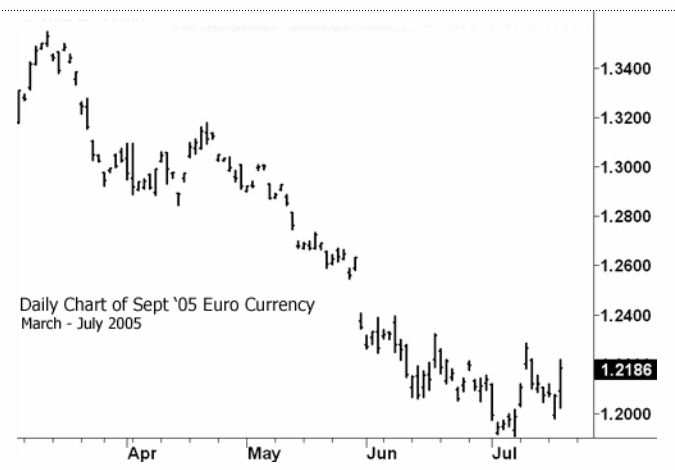Big Gains, Small Losses…Here’s How
The harsh reality
of today’s markets is no different from
yesterday or 10 years ago. Whether you are a trader or investor, ultimately you
have only yourself to blame for the decisions you make regarding your money. You
can make winning decisions or losing decisions. It’s your choice. If you’re a
trend follower, you make your decisions based on the market price. If the trend
is up, it’s a buying opportunity. If the trend is down, it’s a selling
opportunity or a time to go short opportunity. Because you know the market is a
brutal place, you’re prepared for ups and downs, drawdowns and recoveries. You
don’t bet against the trend.
Think about this. There’s a loose sheet piece of paper hanging on the wall in
the office of Paul Tudor Jones, one of the greatest traders of all times that
says, “losers average losers.†For example, during the Enron fiasco a few years
ago, the vast majority of people held on to their Enron stock hoping it would
reverse its downward spiral. The buy and hold mentality wasn’t just limited to
Enron or the past; it continues to attract the vast majority today. Jones’
wisdom was lost on the former stocks editor at the Washington Post:
“If you had Enron in your portfolio and didn’t sell it at $90 or even at $10,
don’t feel embarrassed. ‘On the surface it had always seemed to be a fairly good
growth stock. We bought it all the way down.’â€
Unfortunately poorly educated traders and investors feel better having said they
“bought all the way down†than getting out and accepting a loss. Trend followers
avoid the “losers average losers†mentality as they exit all of their losing
trades quickly. They manage the many small losses instead of avoiding them. At
the same time trend followers stay with profitable trends for a long time, and,
if you look at the big picture, they have far greater upside volatility in their
performance than other trading styles because they know they can’t predict
anything. Trend following performance data shows that high rewards come with
high volatility.
Yet the many in investment community often use drawdown numbers and high
volatility to paint an incomplete and unfair picture of trend following trading.
Trend followers are often forced to make excuses for their drawdowns (even
though they would not be in business for all these years without great
recoveries and ultimately the great returns!). Trend followers achieve positive
returns by correctly targeting the direction of the market and then hanging on
for the wild volatility swings. Yet if they have the good fortune and skills to
be able to benefit from volatility why are they still the objects of so much
criticism and doubt? Take, for example, John W. Henry, the owner of the Red Sox
baseball team and one of the best trend followers ever. During the spring of ‘05
there were catcalls for John’s head in some investment circles for having a
series of drawdowns.
Why? It’s probably a combination of Henry’s huge success and his critics’
ignorance of the trend following approach to life? Trading? So certain that
Henry’s trading prowess had diminished, his critics didn’t even bother to check
out his approximate +9% return for May 2005 and his +9% for June 2005.
You see, any great trend following trader must be patient. David Druz, another
trend follower with a lengthy track record, explains:
“You have to keep trading the way you were before the drawdown and also be
patient. There’s always a part of a trader’s psyche that wants to make losses
back tomorrow. But traders need to remember you lose it really fast, but you
make it up slowly. You may think you can make it up fast, but it doesn’t work
that way.â€
This most recent recovery for trend followers did, as Druz says, come slowly. So
where have the trend following money making opportunities been coming from
recently? The September 2005 Euro Currency market began trending at 1.3000 in
late April to early May. It then dipped below 1.2000 for a gain of $12,500 plus
per contract traded.

From April to July, as the Euro Currency moved lower, the U.S. Dollar moved
higher approximately 4.00 points or $4,000 per contract. That’s not a small
move.
Trend followers targeted these burgeoning currency trends applying strict money
management rules along with pyramiding principles to make some serious cash.
Here, for example (Table 1), is how six trend following funds managed by some of
the great traders performed during the May/June 2005 time period.

Conclusion
Once trend followers start their bucking bronco ride of a trend (like the 2005
currency moves), they hold on tight relying on their trading rules along with
the fortitude needed to stick with their rules when the going gets rough. If you
have rules but no ability to follow them objectively and consistently, you have
got nothing.
Amazingly, the skills needed to be a great trend follower are still unrecognized
by mainstream media and the public at large. If anything their great
performance, drawdowns and bottom line success continue to be misinterpreted and
maligned. I hope to establish an ongoing dialogue here at TradingMarkets.com
allowing the broadest audience possible to recognize and appreciate the benefits
of trend following trading. Let the debate begin.
Michael Covel
Michael W. Covel is the founder and President of Trend Followingâ”
